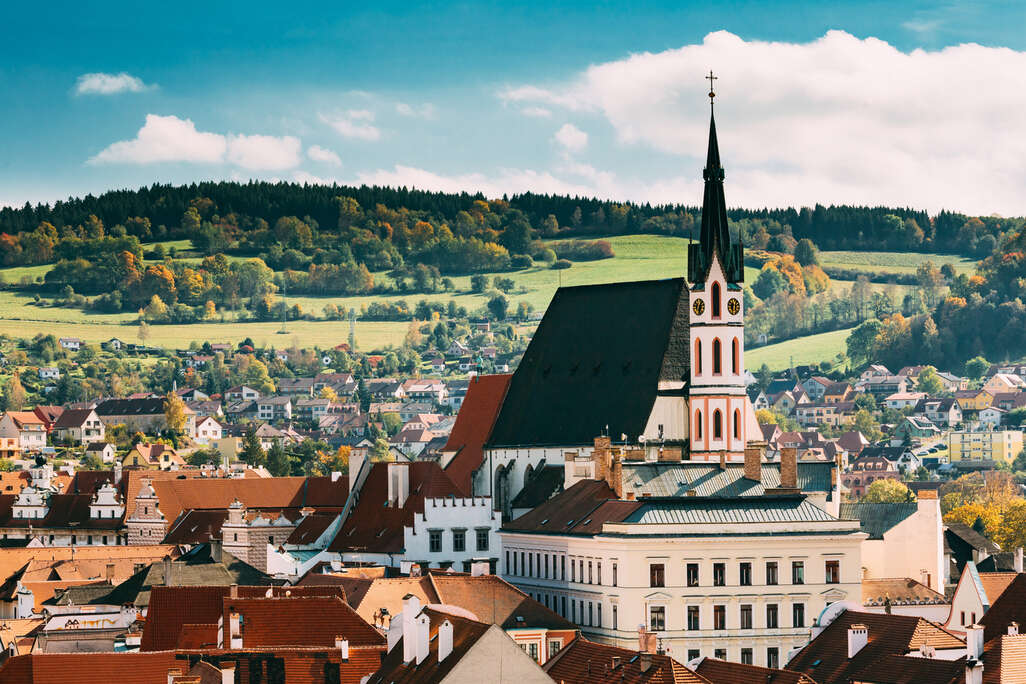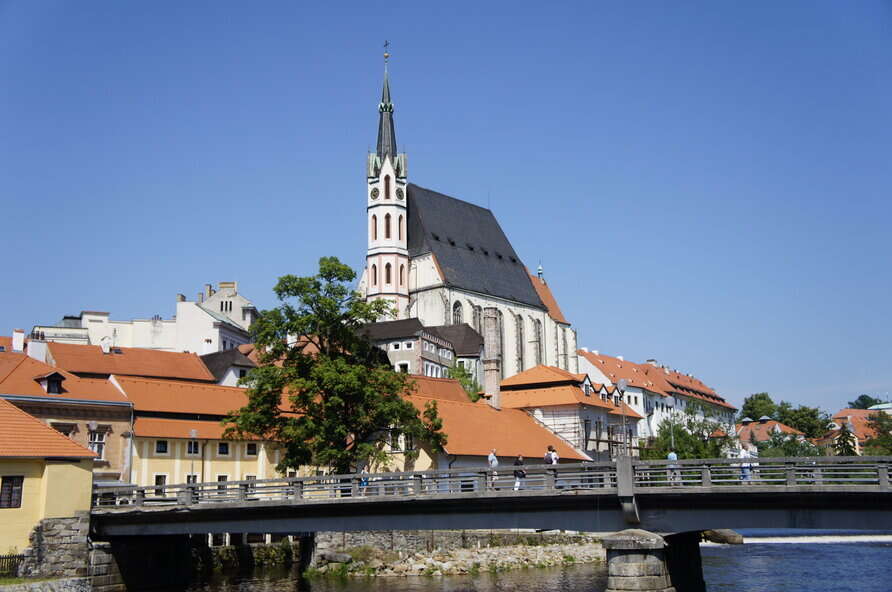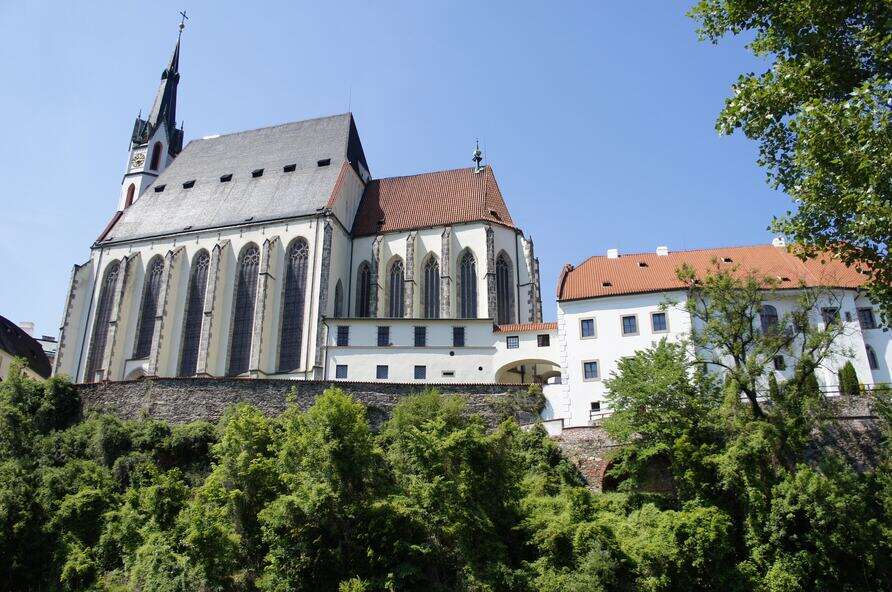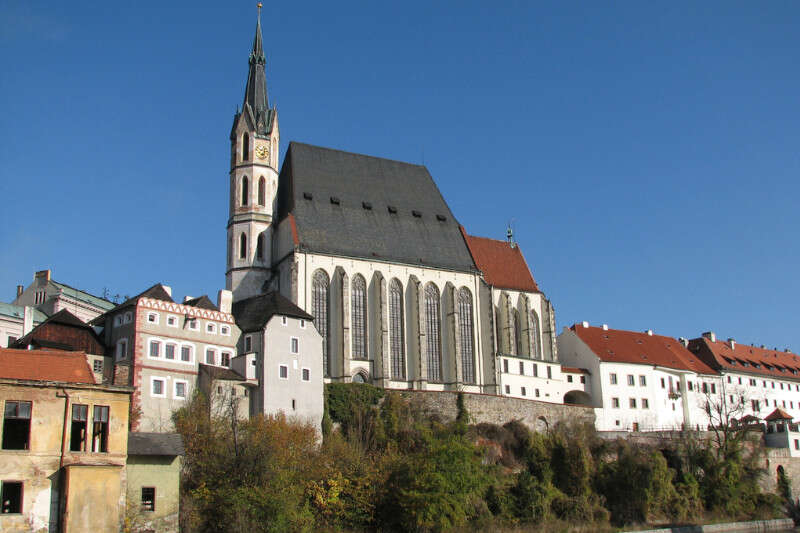St. Vitus Church
The church boasts the longest history of all the sanctuaries in Český Krumlov and is the second architectural landmark of the town next to the castle.
In the style of South Bohemian Late Gothic with organ
The church was founded in 1309 by the first bishop of České Budějovice, Jan of Chlumčany. Today's church was rebuilt from an older church built by Peter of Rožmberk. The three-aisled nave with slender columns is typical of South Bohemian late Gothic. It is vaulted with net vaults related to the Parler style. The architectural and artistic development of the church was completed by Neo-Gothic modifications at the end of the 19th century. In 1866, a new Neo-Gothic organ from Kroměříž was installed, which is now preserved only as a model in the Technical Museum in Vienna (Museum für Technik und Arbeit).
Altars of honour
On the main altar there is a painting of St. Vitus and the Virgin Mary from 1673 - 1683 relating to the period of the Jesuit Order's activity in Český Krumlov. Until 1780, there were many side altars in the church, which were
a kind of expression of "state honour".
These were altars of the guilds of tailors, cobblers, butchers, white and black bakers, millers, masons, carpenters, stonemasons, saddlers, linen makers, cloth makers, blacksmiths and wheelwrights, cooks and, of course, the brewing guild. At the entrance to the chapel there are two tombstones made of red marble from the former tomb of William of Rosenberg and his third wife Anna Maria of Rosenberg from Baden.












